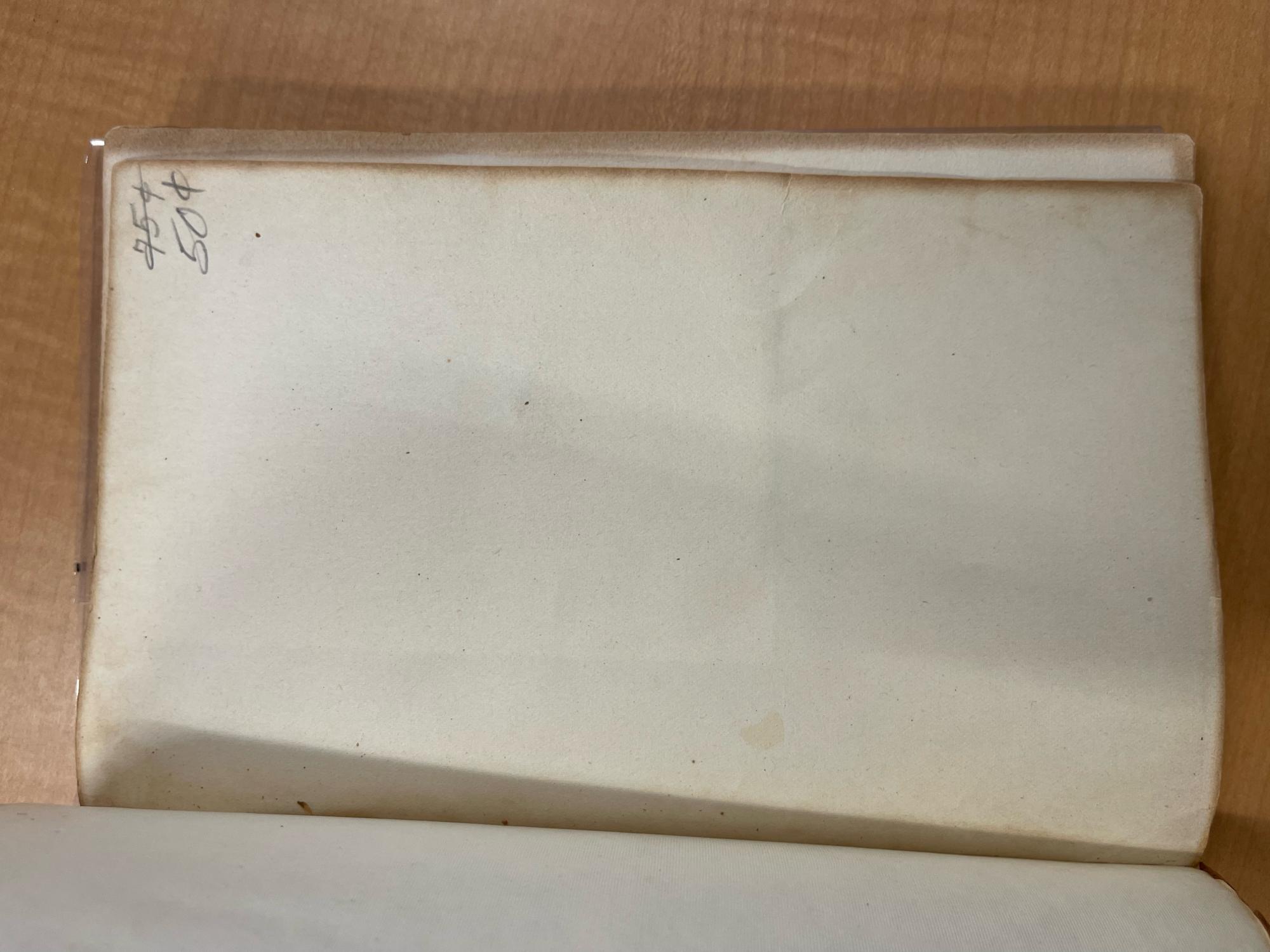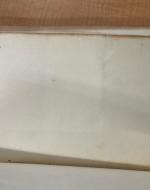Created by aman agah on Thu, 05/18/2023 - 15:47
Description:
Before arriving at Oregon State University, was George Roe’s Rubá’iyat of Omar Khayyam: A New Metrical Version Rendered into English From Various Persian Sources last available in San Francisco at Paul Elder and Company? How long had it sat on the shelf for $.75 before being marked down to $.50 [Image 1]? And when did it find its way to San Francisco? While Roe’s translation was published in New York City through Dodge Publishing, the publisher was originally founded in San Francisco in 1895, and moved to New York in 1898. Adelaide Hanscom Leeson, whose photograph is featured in the front of the text [Image 2] had originally begun her series of photographs inspired by the Rubá’iyat at her studio in San Francisco. Perhaps the text was always destined for San Francisco.
Paul Elder and Company, like Dodge, was also founded in 1898, and published texts, as well as operated book stores. A clue of timing, that is when it found its way to Paul Elder and Company lies within the stamp found at the back of the book [Image 3]. Stamps with the company name were commonly found in the back of books they sold [Image 4], and this particular stamp was used by the company “as early as 1911, and as late as 1946” (Mostardi). So perhaps it is sometime within that span of 35 years that the book found its way there. Should it have been closer to its date of publication, the text would have surely been priced higher than $.75, given the popularity of gift books. Additionally, the price would likely not have been penciled in. So these prices could also have been placed later on, by someone else, someone not even remotely associated with Paul Elder and Company. Maybe the book had, before finding its way in the special collections of Oregon State University, spent some time in a thrift store or used book store.
Paul Elder and Company was known for more than books, but also calendars, magazines, pamphlets. The company began as D.P. Elder and Morgan Shepard, from 1898-1903. Together they published roughly forty titles, with Shepard providing illustrations (Mostardi). In 1903, with the departure of Shepard for Europe, the company was rebranded as Paul Elder and Company. Elder continued to work in publishing and run his book shops, however the 1906 San Francisco earthquake resulted in several losses, primarily impacting the publishing side of his work, and Elder eventually shifted to only running book shops (Mostardi). It is conceivable, given that the company always operated in selling books, that Roe’s text was sent there upon publication, and the stamp pressed neatly into the back of the book was done so upon its first official sale.
It is initially unclear if Hanscom’s photograph was commissioned specifically for this text, though a clue of possibility can be found in the photograph’s date of publication - 1910, same as Roe’s text. The information provided about the photograph is not credited to Hanscom, and sounds perhaps like Roe himself may have written it - based on language and tone similar to that of his introduction. According to William H. Martin and Sandra Mason, Hanscom, who generally “used color photographs of men and women in different poses as illustrations” [Image 5] at times ran “out of ideas and substitut[ed] simple photographs with little link to the verse” (22, 163). Neither statement appears to be the case here - either the photograph was printed in black and white for this text in order to save money, or Hanscom always worked in black and white then later colored over at least some printed images. It is important to also recognize that the specific stanza which the photograph depicts, “When in the market-place I stopped one day / To watch a potter pounding his fresh clay, / The clay addressed him in a mystic tongue— / ‘Once I was man, so treat me gently, pray!’”, is stanza 85 in Roe’s translation. This provides another potential clue of creating this photograph specifically for Roe’s translation. I also think it’s worth noting that the same earthquake which shifted Paul Elder and Company’s business, had also caused losses for Hanscom, whose studio was destroyed in a fire resulting from the quake. She eventually moved her operations to Seattle, and after having worked for several years on Khayyam inspired pieces, she shifted her focus to other illustrated texts (Photography & Vision).
And with that, we finally arrive at George Roe. I was unable to find significant information about Roe - though his is a fairly common Irish name. He was born in Ireland in 1861, and eventually based in San Antonio, Texas. He was an active member of the Omar Khayyam Club of America, and according to at least one source, he worked mainly in translating “Oriental texts”.
Resources
“‘A Ruby Kindles in the Vine’ by Adelaide Hanscom Leeson”. The Misty Miss Chrissy, 26 May 2020. https://schristywolfe.com/2020/05/26/national-photography-month-may-26/. Accessed 18 May 2023.
“A.C. McLurg and Co. Records”. Modern Manuscripts and Archives at the Newberry, 2023. https://archives.newberry.org/repositories/2/resources/3. Accessed 17 May 2023.
“Adelaide Hanscom Leeson”. Sisters of the Lens, 2020. https://www.sistersofthelens.com/adelaide-hanscom-leeson. Accessed 18 May 2023.
“Dodge Publishing Company”. The Lucille Project, 20 July 2020. http://sdrc.lib.uiowa.edu/lucile/publishers/dodge/DODGE.HTM. Accessed 17 May 2023.
Omar Khayyam and George Roe. Rubái’iyát of Omar Khayyám.Rubá’iyat of Omar Khayyam: A New Metrical Version Rendered into English From Various Persian Sources. Dodge Publishing Company, 1910.
Martin, William H. and Sandra Mason. The Art of Omar Khayyam: Illustrating FitzGerald’s Rubaiyat. Bloomsbury Academic, 2007.
“Monday’s Photography Inspiration - Adelaide Hanscom Leeson”. Photography & Vision, 25 February 2019. https://longexposureimages.wordpress.com/2019/02/25/mondays-photography-.... Accessed 17 May 2023.
Mostardi, David. Paul Elder and Company, 2023. https://paulelder.org/. Accessed 17 May 2023.
Copyright:
Associated Place(s)
Part of Group:
Artist:
- Adelaide Hanscom Leeson






